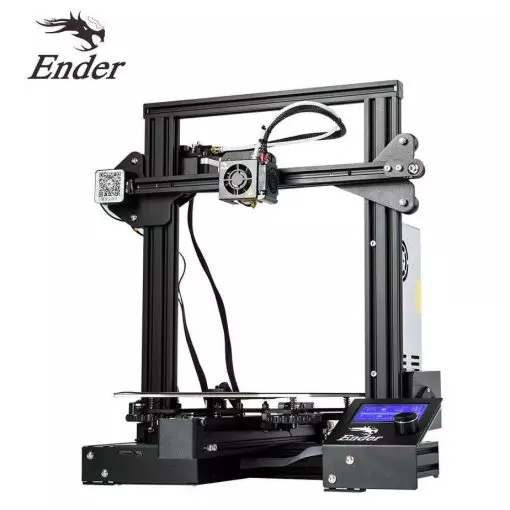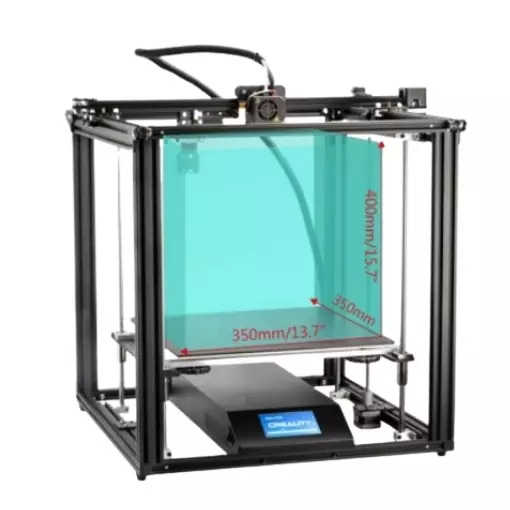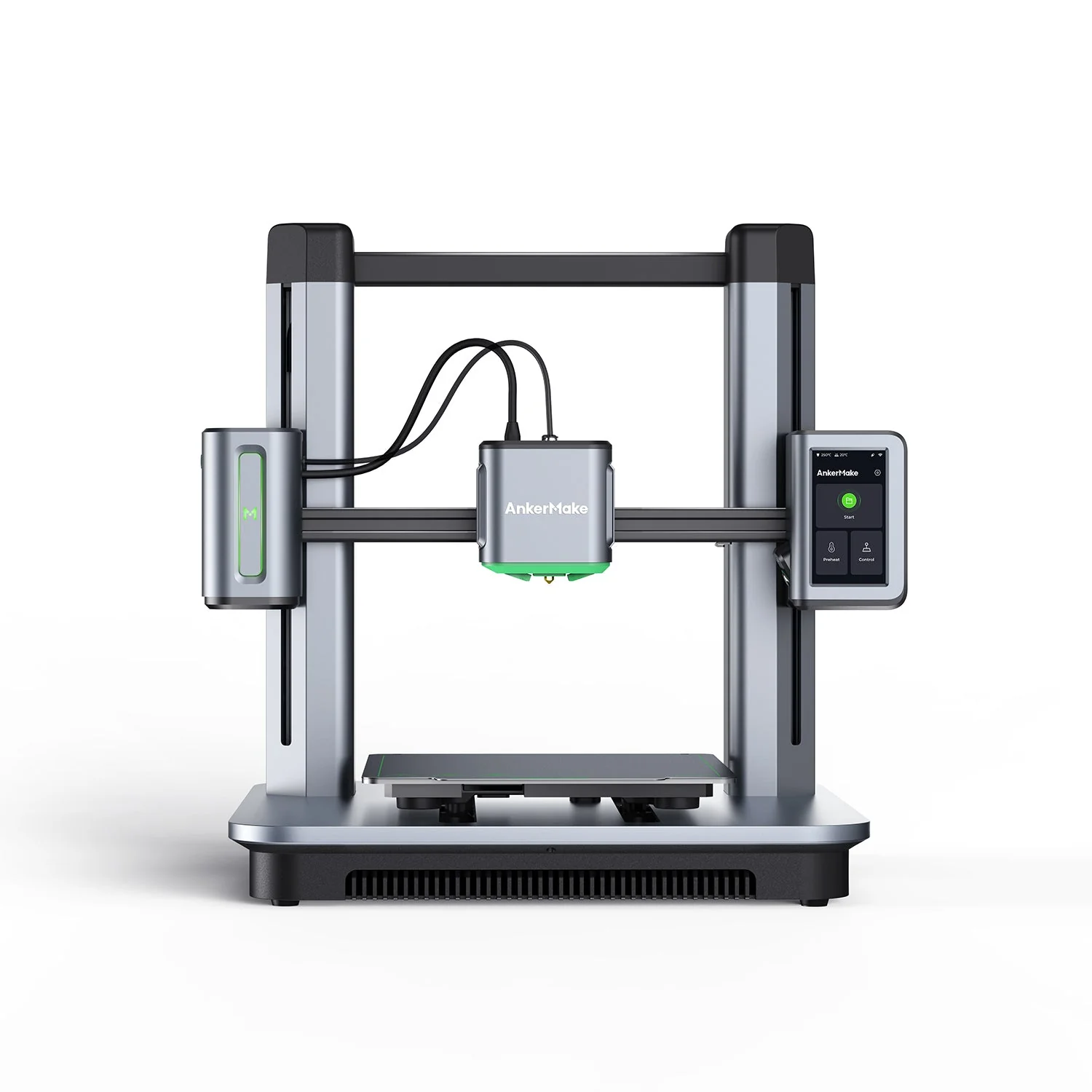Compare Ender 3 vs Ender 5 Plus vs M5
Comparison between the best 3D printers
Choose the best 3D printer at the best price. The cheapest 3D printers are here.
Buy a 3D printer here with 3D Fila.
 |
 |
 |
|
| Model | Ender 3[BUY Ender 3] |
Ender 5 Plus[BUY Ender 5 Plus] |
M5 |
| Printing Material | Filament | Filament | Filament |
| Estimated price | $210,00 | $599,00 | $497,00 |
| Fabricante | Creality 3D | Creality 3D | AnkerMake |
| Release Year | 2018 | 2019 | 2023 |
| Print Volume [mm] | 220x220x250 | 350x350x400 | 235x235x250 |
| Printer Size [mm] | 440x440x465 | 632x619x666 | 502x438x470 |
| Weight [kg] | 6,62 | 18,2 | 12,6 |
| Power Loss Recovery | NO | YES | YES |
| Enclosed printer | NO | NO | NO |
| Bed Leveling | Manual | Automatic | Automatic |
| Filament End Sensor | NO | YES | YES |
| Bed type | Heated | Heated | Heated |
| Power supply system | Bowden | Bowden | Direct Drive |
| Standard nozzle | 0,4 | 0,4 | 0,4 |
| Maximum Nozzle Temperature [°C] | 255 | 260 | 260 |
| Maximum Bed Temperature [°C] | 110 | 100 | 100 |
| Maximum printing speed [mm/s] | 180 | 180 | 500 |
| Filament holder | YES | YES | YES |
| Camera for supervision | NO | NO | YES |
| Recommended filaments | PLA, TPU, ABS, PETG | PLA, TPU, ABS, PETG | PLA, PETG, ABS |
| Recommended slicers | Cura, Simplify, Slic3r | Cura, Simplify, Slic3r | AnkerMake Studio (macOS, Windows), Simplify3D, Ultimaker Cura, PrusaSlicer |
| Maximum Resolution [mm] | 0,1 | 0,1 | 0,1 |
| Processor | 8 bits | 32 bits | |
| Display | Mono | Touchscreen TFT 4,3'' | Touchscreen 4,3'' |
| Power Supply | 24V / 270W | 24V / 504W | 350 W |
| Connectivity | SD / USB | SD / USB | Wi-Fi, USB-C, OTA Upgrade |
| Operating systems | Windows, Mac, Linux | Windows, Mac, Linux | Windows, Linux, Macbook |
| Date of registration in the system | 2021-04-13 | 2021-04-14 | 2024-07-08 |
| Release date | 2018 | 2019 | 2023 |
| Extra features | The Ender 3 V1 is a DIY assembly 3D printer, a sales leader since 2017, standing out for its cost-benefit. With a wide printing capacity, it has a CNC machined structure for precision and stability. It offers high-precision prints with low noise, thanks to its innovative V-profile and pulleys. It has a self-adhesive magnetic platform for easy removal of models and excellent adhesion. The Ender 3 heats up quickly, reaching 100°C in 5 minutes, ideal for agile prints. It includes protection against power failures, allowing you to resume printing after interruptions, saving time and material. | The Ender 5 Plus offers a large print volume (350x350x400 mm) and fast assembly. It includes a BLTouch sensor, but with range limitations. It stands out for its dimensional accuracy, although it requires adjustments to the slicer settings. Despite the noise, its integrated design saves space, and includes features such as a filament sensor and power resumption. Ideal for large projects, it requires refinement in the settings for high-quality prints. | The AnkerMake M5 printer stands out for its impressive print speed, reaching up to 500mm/s. It features AI print monitoring, an integrated camera for creating timelapses, auto-leveling bed with pressure sensor, direct extruder, flexible PEI-coated build plate, and Wi-Fi and USB-C connectivity. Assembly is quick and easy, and the printer is designed to deliver high print quality and ease of use. |
| Support for multiple colors and materials (AMS and CFS) | NO | NO | NO |
Notes * |
|||
| Cost-benefit | 6 / 10 | 6 / 10 | 7 / 10 |
| Hardware | 0.5 / 10 | 2 / 10 | 4 / 10 |
| Screen | . | . | . |
| Print volume | 3 / 10 | 4 / 10 | 3 / 10 |
| Performance | 1 / 10 | 1 / 10 | 4 / 10 |
| [BUY Ender 3] | [BUY Ender 5 Plus] |
Conclusion |
| In comparing the Ender 3, Ender 5 Plus, and AnkerMake M5 3D printers, each model presents distinct advantages, catering to different user needs and budgets. The **Ender 3**, while being the most affordable option, offers a solid entry point for beginners with its easy assembly and reliable performance. It boasts a decent print volume and is favored for its cost-effectiveness, making it suitable for casual hobbyists. However, its manual bed leveling and lack of advanced features such as power recovery hinder its appeal for more serious users. The **Ender 5 Plus** builds on the Ender 3's design but offers a larger print volume and enhanced features like automatic bed leveling and a filament end sensor, which add convenience and ease of use. However, its higher price point may limit its accessibility for budget-conscious individuals. The printer’s size and accuracy make it ideal for larger projects, albeit requiring some adjustments for optimal performance. On the other hand, the **AnkerMake M5** represents a significant leap in technology and features an impressive maximum printing speed, AI monitoring capabilities, and a direct drive system. It has modern connectivity options and an integrated camera, appealing to tech-savvy users looking for advanced functionalities. While it does come at a higher price, its ease of use and performance make it a strong competitor for professionals or those pursuing high-quality prints. In conclusion, the best choice among these 3D printers depends on user priorities. For budget-friendly basic printing, the Ender 3 is commendable. The Ender 5 Plus offers more advanced features suitable for serious hobbyists or small businesses needing larger print capabilities. Meanwhile, the AnkerMake M5 stands out for those seeking speed and innovation, justifying its higher price tag with superior performance and ease of use. Ultimately, users should weigh cost against desired features and print quality to find the most suitable option for their needs. |

